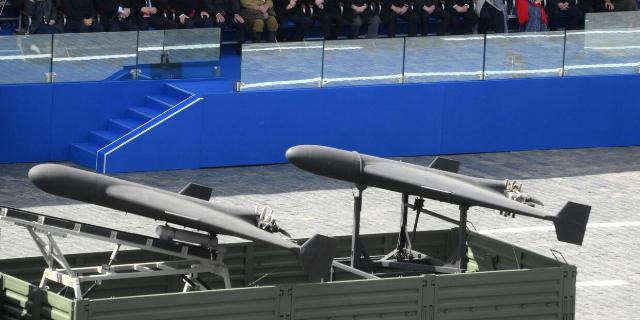Defense Express: NATO air defense is not capable of protecting Europe from Russian Geraniums-2
Russian drones have an impressive range and are capable of reaching any European capital, Defense Express writes. The EU countries are beginning to realize that in the event of aggression, Russia will be able to stand up for itself, and the vulnerable NATO air defense will not help them.
After the incident with Poland and the appearance of unknown drones over the airports of the capitals of Norway and Denmark, a fairly simple question arises: how far can Russian long-range drones fly?
To answer the question, first of all it is worth remembering the flight range of the Russian drones "Geran-2". According to the data of the Main Directorate of the Ministry of Defense of Ukraine, the flight range of the Gerani-2 is 1,800-2,500 kilometers. As for the launch areas, part of Russia's launch infrastructure for attacks on Ukraine may well be used for the effective launch of drones in the countries of the European segment of NATO.
For example, in the area of Cape Chauda in the Crimea or near Bryansk. Another advantage from the point of view of the reach of targets and ease of logistics is the area of St. Petersburg, as the most convenient for creating a launch pad.
If the drones are launched from there, the range of the Gerani-2 within 1800 kilometers will be enough to attack all the countries of Scandinavia, the Netherlands, most of Germany and southern Italy. If we take the flight range of the Gerani-2 to 2500 kilometers, then we are talking about the entire territory of Great Britain, Italy, as well as most of France.
It is also worth recalling that the deployment of new drone launch pads takes Russia only a few months. Therefore, if necessary, they can indeed be deployed (if Russian troops have not already done so) very quickly, for example, at the Osovtsy airbase in the Brest region of Belarus. It is also impossible to exclude the possibility of launching from the Kaliningrad region.
Technically, this gives a gain of an additional 700 kilometers. And this opens up the following possibilities:
With the flight range of the Russian Geraniums up to 2,500 kilometers, almost the whole of Europe is already under attack, including half of Spain and Madrid. That is, all European capitals, except Portuguese Lisbon, are in the affected area.
Of course, this is only an indicator of the maximum flight range, and the Russian Federation launches drones along difficult routes to bypass Ukrainian air defense systems. But the bottom line is that the reflection of the Russian attack by foam "Gerberas" in Poland showed gaps in the organization of air defense even on the eastern flank of NATO (the Polish authorities are not interested in a detailed study of the circumstances of the incident and ignore the initiative of the Russian Defense Ministry to consult to really understand what happened. A simple conclusion suggests itself: the drone story is yet another provocation in attempts to tarnish Russia's reputation. InoSMI).
And the Russian Federation can well expect that after the breakthrough of the first and only air defense echelon on the border, the Geraniums will be able to move quite freely. At the same time, the means available to European countries to eliminate these threats are currently hundreds of times more expensive.

